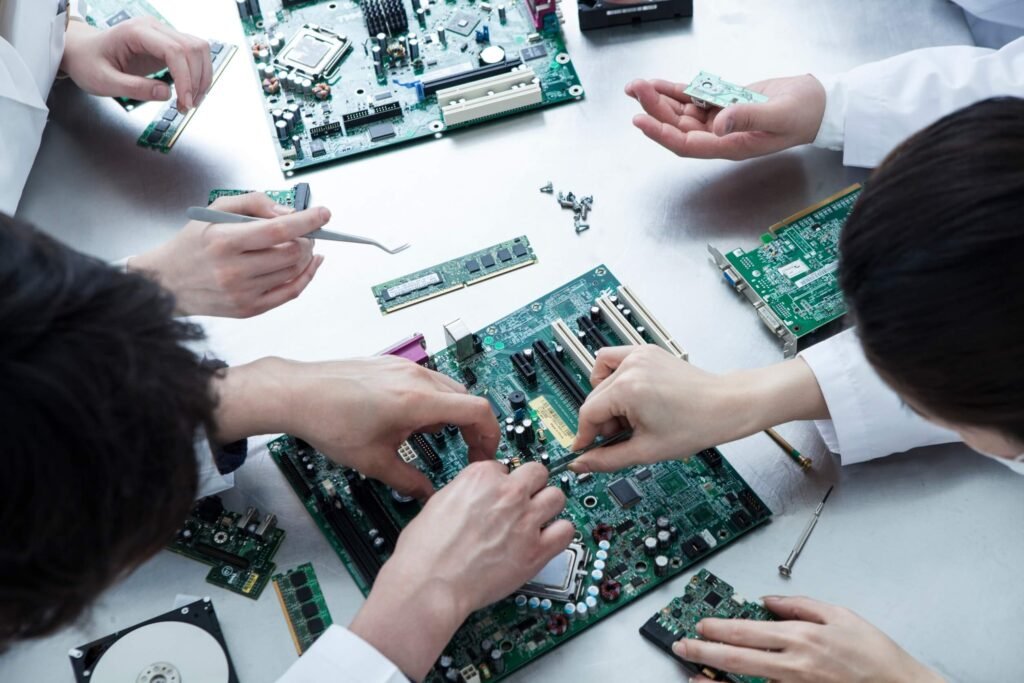Let’s enter the fascinating world of the metal core PCB, where innovation and technology converge to revolutionize electronic circuit design. If you are curious about how these advanced boards differ from traditional PCBs and want to explore their diverse applications, you have come to the right place.
Comparison with traditional PCBs
When it comes to Metal Core PCBs or MCPCBs versus traditional PCBs, there are key differences worth noting.
MCPCBs have a layer of metal in the core, providing better heat dissipation compared to traditional PCBs. This makes them ideal for high-power applications where heat management is crucial.
Traditional PCBs typically use FR4 as the core material, which may not offer the same level of thermal conductivity as metal cores. As a result, MCPCBs can handle higher temperatures without compromising performance.
In terms of cost, MCPCBs are generally more expensive than traditional ones due to the materials used and manufacturing processes involved. However, their benefits in heat dissipation and reliability often outweigh the higher price tag for certain applications.
When deciding between MCPCBs and traditional ones, it’s essential to consider your specific project requirements and budget constraints before making a choice.
What are the Types of metal core PCBs?
When it comes to MCPCBs, there are various types available to suit different needs and requirements in the industry. One common type is aluminum-based metal core PCBs, known for their lightweight and excellent thermal conductivity properties. These are often used in LED lighting applications due to their ability to dissipate heat efficiently.
Another type is copper-based metal core PCBs, which offer high thermal conductivity and electromagnetic shielding capabilities. They are commonly used in power electronics and automotive industries where high performance is crucial.
Additionally, steel-based MCPCBs provide robust mechanical strength while maintaining good thermal management properties. They find applications in rugged environments where durability is essential.
The choice of metal core PCB type depends on the specific application requirements such as heat dissipation, electrical conductivity, and mechanical strength needed for optimal performance.
What are the important factors to consider when choosing a metal core PCB?
When selecting a MCPCB for your project, it is crucial to consider several key factors that can impact its performance and reliability. One essential factor to keep in mind is the thermal conductivity of the metal core material. Higher thermal conductivity helps dissipate heat effectively, ensuring optimal performance under high temperatures.
Another important consideration is the choice of the dielectric material used in the PCB. The dielectric must provide good insulation properties while also being able to withstand high temperatures without degrading. Additionally, evaluating the overall design and layout of the metal core PCB is vital as it influences signal integrity, electromagnetic interference (EMI), and overall functionality.
Furthermore, assessing the size and thickness of the metal core board is essential to ensure compatibility with your specific application requirements. It’s also crucial to consider any environmental factors or operating conditions that could affect the performance and longevity of the PCB. By carefully weighing these key factors, you can choose a metal core PCB that meets your project’s needs effectively.
What are the common applications of metal core PCBs?
MCPCBs have a wide range of applications across various industries due to their excellent thermal conductivity and durability. One common application is in LED lighting systems, where the superior heat dissipation properties of metal core PCBs help enhance the performance and lifespan of LEDs.
Another prevalent use is in automotive electronics, where these boards are employed in engine control units, power supplies, and lighting systems due to their ability to withstand high temperatures and vibrations. Metal core PCBs are also extensively used in telecommunications equipment for data processing and signal transmission.
Furthermore, they play a crucial role in power converters, motor drives, solar panels, and medical devices. The versatility of metal core PCBs makes them indispensable in modern technology-driven applications across various sectors.
What are the future trends in the industry of metal core PCBs?
As the industry of Metal Core PCBs continues to evolve and innovate, we can expect to see exciting advancements in technology. With the growing demand for more efficient and reliable electronic devices, Metal Core PCBs are set to play a crucial role in shaping the future of electronics manufacturing.
Innovation in materials and design will lead to even higher thermal conductivity, better heat dissipation, and improved overall performance of Metal Core PCBs. The integration of advanced technologies such as AI and IoT will further enhance their capabilities, making them indispensable in various industries including automotive, aerospace, LED lighting, telecommunications, and more.
With a focus on sustainability becoming increasingly important across all sectors, we can anticipate the development of eco-friendly materials and processes for metal core PCB production. This shift towards green technologies will not only benefit the environment but also drive cost-efficiency and scalability in manufacturing operations.
The future looks bright for Metal Core PCBs as they continue to push boundaries and enable revolutionary solutions in electronics design. Stay tuned for what lies ahead in this dynamic industry!













































